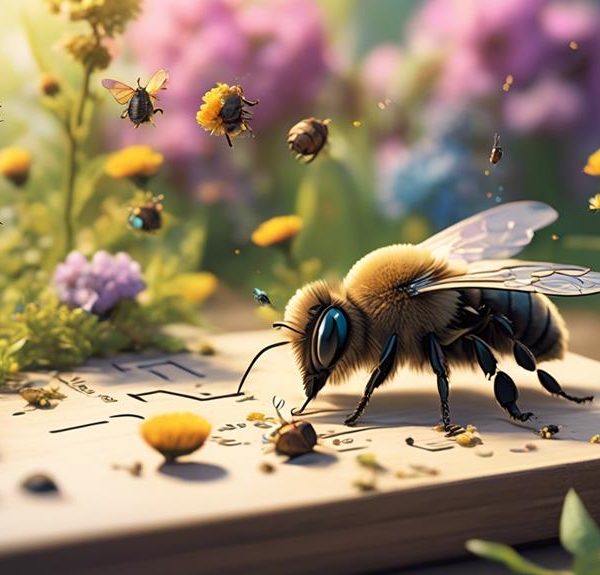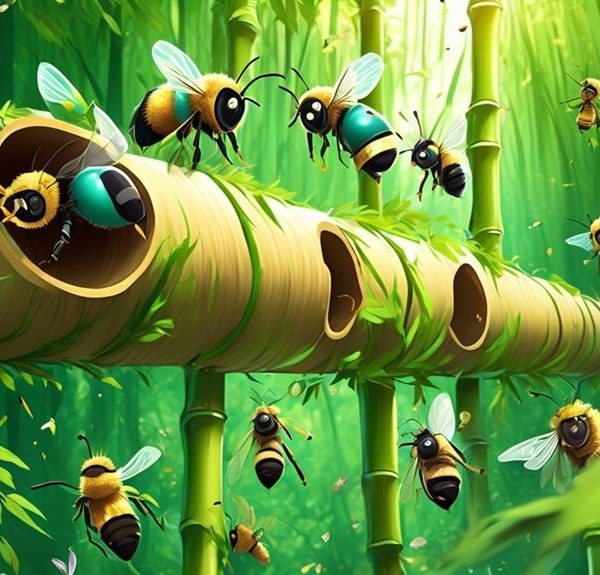Mystify your understanding of bees as we explore the intriguing possibility of harvesting honey from solitary mason bees.
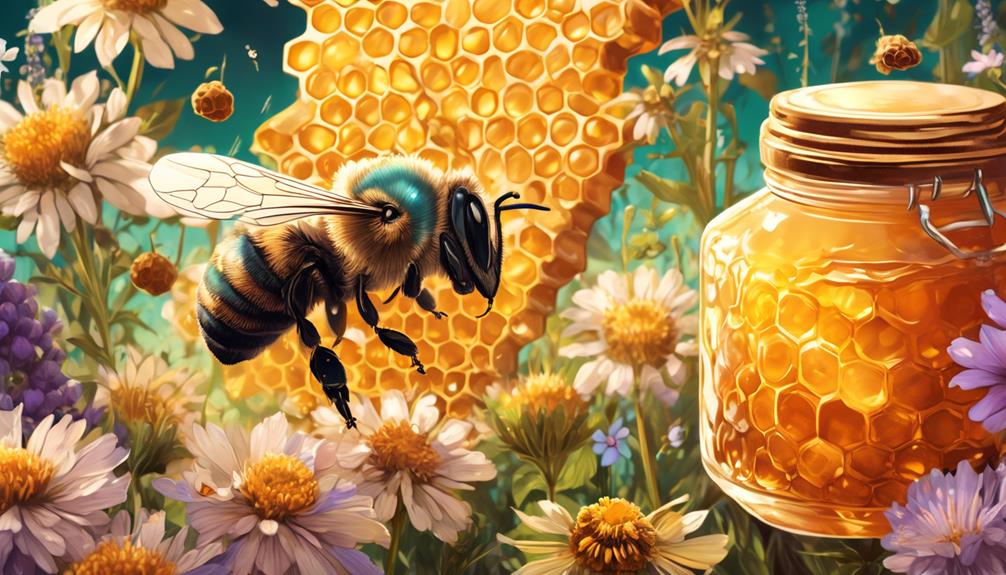
Can Mason Bees Have Honey Harvested?
Imagine a world where every single bee could produce buckets of honey.
You've probably heard of honeybees, the regular contributors to most of the sweet, golden nectar we consume. But what about mason bees?
These solitary insects, unlike their social honeybee counterparts, march to a different drum. They are efficient pollinators, yes, but can you harvest honey from them?
While you're pondering this unlikely scenario, consider this: your understanding of bees and honey is about to be challenged.
Key Takeaways
- Mason bees do not produce honey, their focus is on pollination rather than honey production.
- Harvesting mason bee cocoons in the fall can help control parasites and diseases.
- Mason bees are valuable for their efficient pollination abilities.
- Mason bees are safe for urban environments.
Understanding Mason Bees
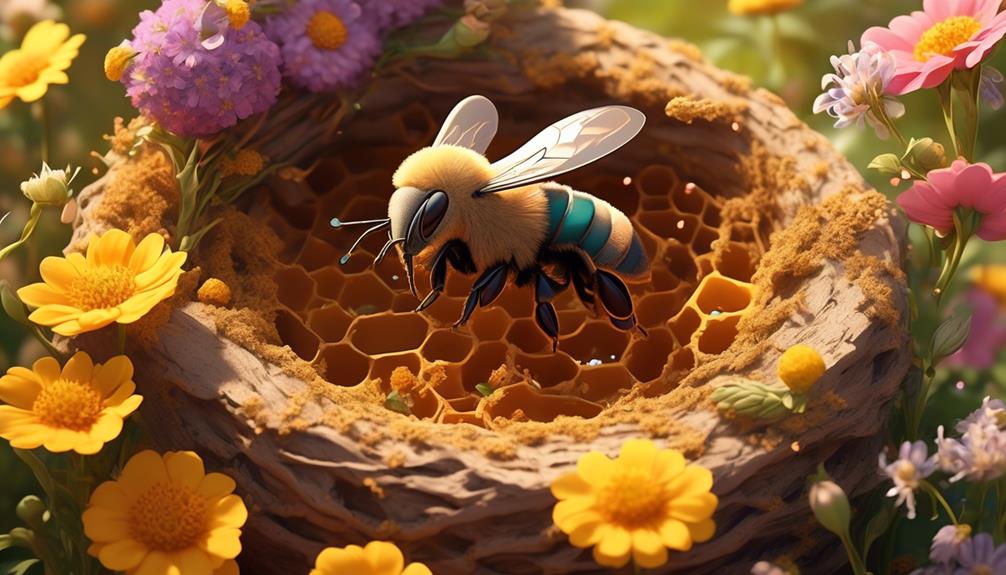
To fully appreciate the process of harvesting honey from mason bees, you need to understand these fascinating creatures and their unique behaviors. Unlike honeybees, mason bees don't produce honey in large quantities. They're solitary creatures, meaning each female is fertile and makes her own nest, unlike honeybees that live in colonies with a single queen.
Mason bees derive their name from their nesting habits. They use mud or clay – much like a mason – to build their nests, typically in holes or tubes. These nests aren't filled with honey, but rather, with eggs. The female mason bee lays an egg in each cell of the nest and provides it with a mixture of pollen and nectar, which acts as food for the larva once it hatches.
While mason bees can't be harvested for honey like honeybees, they play an essential role in the ecosystem as super pollinators. Their hairy bodies pick up pollen easily, and since they aren't as selective with flowers as honeybees, they tend to spread pollen more diversely, boosting the health and productivity of plants. Understanding these essential differences is key to appreciating the unique role of mason bees in our environment.
Lifecycle of Mason Bees

Understanding the lifecycle of mason bees is crucial as it can help you appreciate their role in the ecosystem even more. These industrious bees have a unique lifecycle, distinct from other bee species.
Mason bees begin life as eggs, laid by the female in small chambers within a nest, typically in holes in wood or hollow stems. Each egg is provided with a food source of pollen and nectar, upon which the female seals the chamber with mud, hence their name.
After a few days, the eggs hatch into larvae, which then consume the stored food. Once they've eaten their fill, they spin a cocoon and enter the pupal stage, maturing into an adult bee within the cocoon. This metamorphosis happens over winter, and by spring, fully grown mason bees emerge from their cocoons, ready to mate and start the cycle anew.
Unlike honey bees, mason bees are solitary. Each female is a queen, building and provisioning her own nest. They're not aggressive, and they don't produce honey, but their efficient pollination makes them an essential part of our ecosystem. Understanding this lifecycle helps you appreciate the vital role these bees play.
Honey Production in Bees
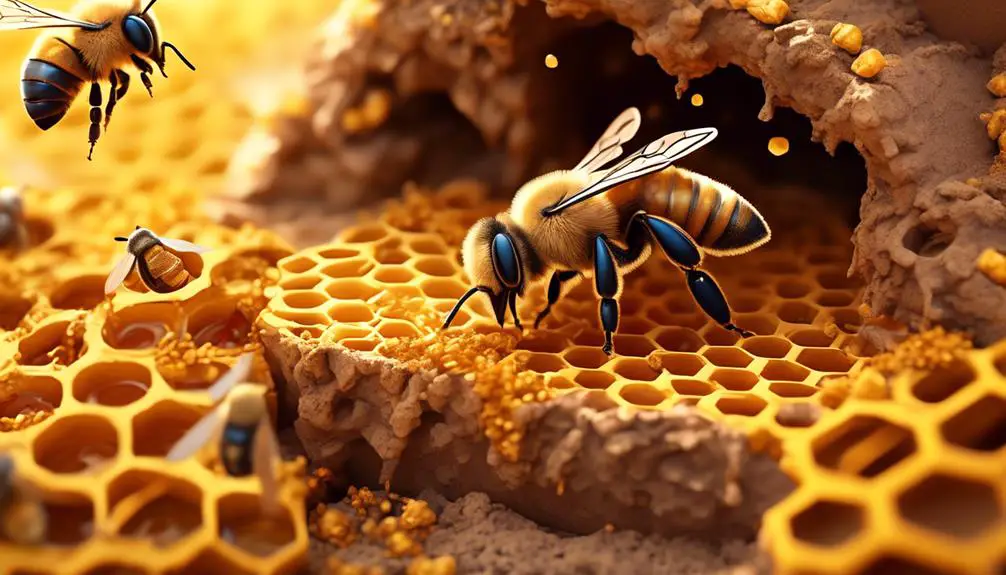
Delving into the sweet intricacies of honey production, you'll find that this liquid gold is the result of a complex, fascinating process carried out by our hardworking honey bees. This process begins when bees collect nectar from flowers, storing it in their 'honey stomachs' or nectar sacs. Once full, they fly back to their hive, where worker bees take over.
These diligent workers chew the nectar, breaking it down into simple sugars that are then deposited into the honeycomb. The bees then fan their wings to evaporate the water content, transforming the nectar into thick, sweet honey. Once the honey is ready, it's sealed with a layer of beeswax, preserving it for later use.
However, it's crucial to note that not all bees produce honey. Mason bees, for instance, aren't honey producers. They're solitary bees and focus on pollen collection for feeding their larvae, not producing honey. This is why you can't harvest honey from them. Understanding the differences between bee species is essential for effective and ethical beekeeping practices.
Mason Bees Vs Honeybees
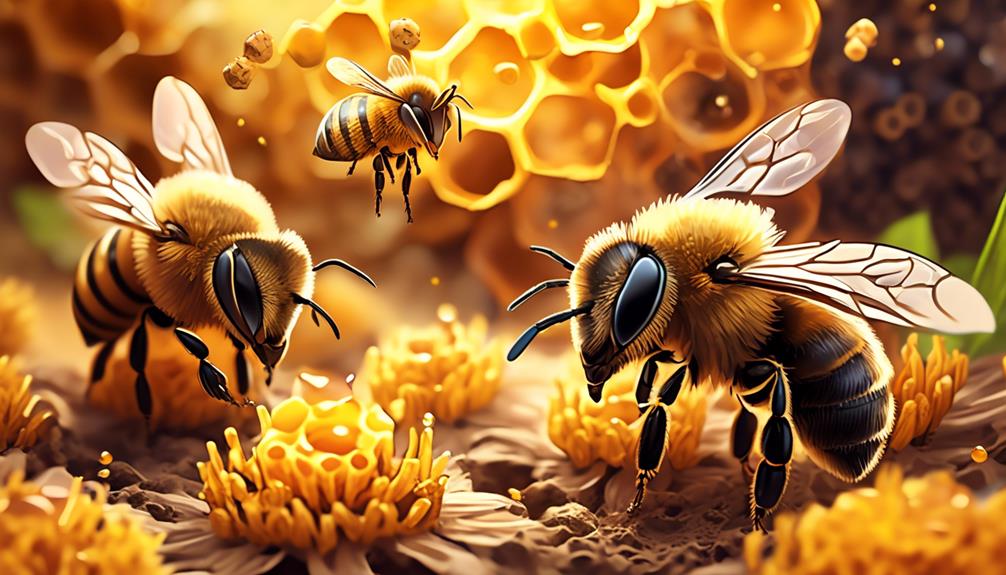
In comparison to honeybees, mason bees lead a solitary lifestyle and focus primarily on pollen collection, rather than honey production. They're solitary creatures that don't live in colonies like honeybees do. Instead, they use mud to build nests in small cavities, hence their name.
You'll find that mason bees are more efficient pollinators than honeybees. Where a honeybee might visit 50 flowers in a day, a mason bee can visit up to 2,000. They're not just efficient, they're hardy too, able to fly in cooler, wetter weather when honeybees would stay in their hive.
Honey production isn't a priority for mason bees. They collect pollen to feed their larvae, not to make honey. In fact, mason bees don't have the physical capability to produce honey as honeybees do. The nectar they collect is used only for immediate energy needs.
Harvesting Possibilities From Mason Bees
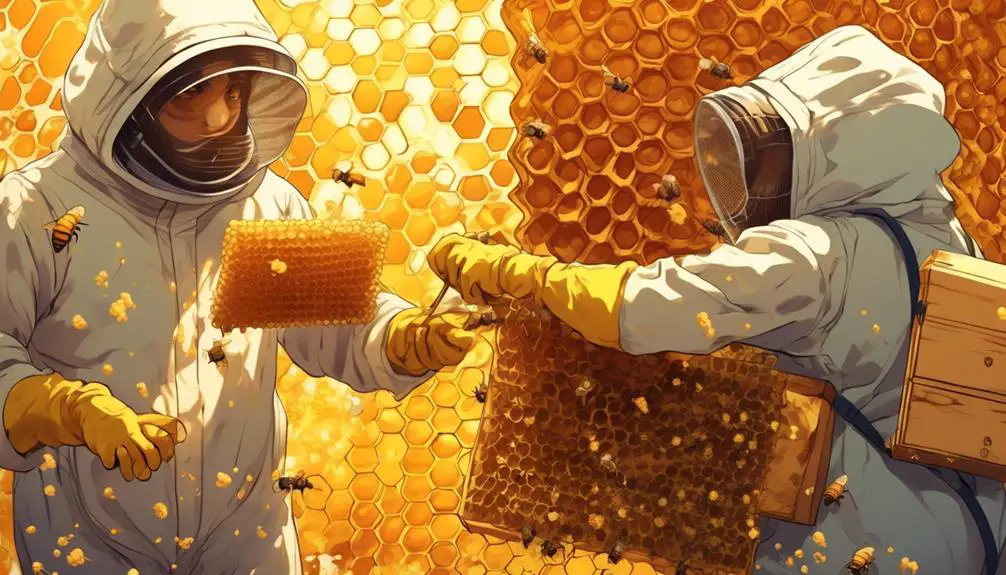
While mason bees may not produce honey as their honeybee counterparts do, they offer a wealth of other valuable resources worth exploring. You could consider their primary contribution to be pollination. They're far more efficient pollinators than honeybees, which isn't surprising given their solitary nature. Each female is a queen and works diligently to provide for her offspring, visiting numerous plants in the process.
Mason bees are also known for their gentle nature, making them excellent for urban environments. They aren't aggressive and won't sting unless threatened, which makes them a safe option for neighborhoods, school projects, and public gardens.
There's also the potential for harvesting mason bee cocoons. This might sound strange, but it's an important aspect of mason beekeeping. You can harvest and clean these cocoons in the fall, helping to control parasites and diseases. This way, you're ensuring the health and productivity of future generations.
Though you can't harvest honey from mason bees, they offer their own unique rewards. By understanding these, you can maximize their benefits and contribute to a healthier environment. Mason bees may not give you honey, but they'll certainly sweeten your garden.
Conclusion
So, can you harvest honey from mason bees? Unfortunately, no. Unlike honeybees, mason bees aren't producers of honey. They're solitary, non-aggressive pollinators that play a pivotal role in our ecosystem.
Though you can't reap honey, you'll definitely reap the benefits of their pollination efforts. So, don't dismiss these tiny creatures. Embrace them, and you'll foster a thriving garden and contribute to a healthier environment.

